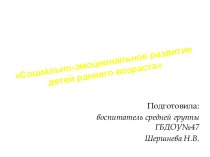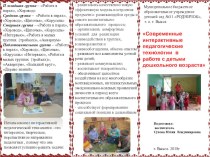- Главная
- Разное
- Бизнес и предпринимательство
- Образование
- Развлечения
- Государство
- Спорт
- Графика
- Культурология
- Еда и кулинария
- Лингвистика
- Религиоведение
- Черчение
- Физкультура
- ИЗО
- Психология
- Социология
- Английский язык
- Астрономия
- Алгебра
- Биология
- География
- Геометрия
- Детские презентации
- Информатика
- История
- Литература
- Маркетинг
- Математика
- Медицина
- Менеджмент
- Музыка
- МХК
- Немецкий язык
- ОБЖ
- Обществознание
- Окружающий мир
- Педагогика
- Русский язык
- Технология
- Физика
- Философия
- Химия
- Шаблоны, картинки для презентаций
- Экология
- Экономика
- Юриспруденция
Что такое findslide.org?
FindSlide.org - это сайт презентаций, докладов, шаблонов в формате PowerPoint.
Обратная связь
Email: Нажмите что бы посмотреть
Презентация на тему Developmental physiology andschool hygiene
Содержание
- 2. The diagram of the cell and key terms:TissueProtoplasmNucleusNucleoplasmCytoplasmCell-wallAttraction sphereCell reproductionLymphIntercellular material
- 3. The structure of the cell.
- 4. Robert Hooke discovered cells. He took microscopy
- 5. Importance of the cellsActive agents in all
- 6. Cell division and reproduction.Rule 1:The new cells
- 7. Cell surrounding1) Water is necessary for
- 8. General work of cells. Three processes.
- 9. Nature of Body organization A definite arrangement
- 10. Maintenance of Life (organization and preservation of
- 11. The main physiological problems.Internal: through digestion, circulation,
- 12. Скачать презентацию
- 13. Похожие презентации
The diagram of the cell and key terms:TissueProtoplasmNucleusNucleoplasmCytoplasmCell-wallAttraction sphereCell reproductionLymphIntercellular material












Слайд 2
The diagram of the cell and key terms:
Tissue
Protoplasm
Nucleus
Nucleoplasm
Cytoplasm
Cell-wall
Attraction
sphere
Слайд 3
The structure of the cell.
Cell
Cell-wall protoplasm (physical basis
(protection of the cell) of life)
Nucleus main body cytoplasm
(nourishment (surrounding (all parts of
and formation the nucleus) the cell)
of new cells)
attraction sphere
(cooperating with main
body to form new cells)
Слайд 4 Robert Hooke discovered cells. He took microscopy as
a hobby and used to view various specimen under
his microscope. Once, he made a thin slice of cork and observed it under the microscope. Since corks are made from the oak trees, they were made up of cells. Hooke observed numerous tiny compartments and called them "cells".Robert Hooke (28 July 1635 – 3 March 1703) was an English natural philosopher, architect and polymath.
The cell was discovered in 1665.
The cell theory, first developed in 1839 by Matthias Schleiden and Theodor Schwann, states that all organisms are composed of one or more cells, that all cells come from preexisting cells, that vital functions of an organism occur within cells, and that all cells contain the hereditary information necessary for regulating cell functions and for transmitting information to the next generation of cells.
Cells emerged on planet Earth at least 4.0–4.3 billion years
Слайд 5
Importance of the cells
Active agents in all of
the tissues
Living, working parts of the body
Body “individuals”.
Cells build
up the bodyand carry on its
different functions.
Слайд 6
Cell division and reproduction.
Rule 1:
The new cells are
always formed by and from the old ones.
Rule 2:
Formation
and growth of new cells lead to the full size of the body.Rule 3:
When growth is complete, cell reproduction is supposed to stop.
Rule 4:
If tissues are injured or bones are broken the cell-reproduction continues.
Слайд 7
Cell surrounding
1) Water is necessary for cell-life
Take
in materials
Give out materialsEssential part of
protoplasm
2) No water cells become inactive and die
3) Fluid, oxygen and food to the cells are carried by the lymph through intercellular material.
Слайд 9
Nature of Body organization
A definite arrangement of
the cells to form tissues
A definite arrangement of the
tissues in the organ.A definite arrangement of organs to form systems.
Supreme purpose:
Maintenance
of the cell group
Слайд 10 Maintenance of Life (organization and preservation of the protoplasm
cell body)
1 purpose supply protoplasm with water,
food, oxygen,2 purpose remove any waste materials
Remember: cells rapidly exhaust the nutrient fluid.
Слайд 11
The main physiological problems.
Internal: through digestion, circulation, respiration
and excretion maintaining the nutrient fluid for the
cells.External: through the organs of motion and organs of special sense bringing the body into secure relations with its surrounding and satisfying its needs.





























